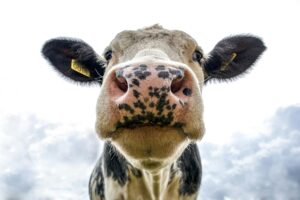
Planting trees in grasslands won’t save the planet – rather protect and restore forests
Why rangelands matter, and why misguided initiatives here do more harm than good …
Press release
South Africa has barely scratched the surface of the enormous potential of biogas as a sustainable energy source, waste management system and producer of fertiliser.
Biogas offers the most accessible solution to the challenges in SA relating to energy production, waste treatment and environmental pollution – especially for homes and schools in rural areas, food manufacturing and waste treatments plants in municipalities – and it should be prioritised as a sustainable solution.
This is according to Agama Biogas, which has been producing and installing prefabricated biogas digesters across the country for a decade.
In South Africa, the industry has existed in a low intensity state for a long time, inhibited by complex legislation requirements relating to power and waste streams. There are currently approximately 100 biogas projects in South Africa either in development, construction or operation.
“There is at least 90MW of energy lying in sewerage treatment plants across the country – installing biodigesters at water treatment plants would significantly reduce the electricity requirements of these facilities, which are energy intensive,” says Gordon Ayres, CEO of Agama Biogas.
“Some large food manufacturing plants utilise up to one million litres of water per day, that is not recycled – biogas digesters would enable the waste water to be recycled in an energy efficient process, while outputting gas to drive power for the plants and fertiliser which can be used in agriculture.”
Ayres says that in Germany, 10% of the power feeding the national grid comes from biogas derived from processed sewerage and wheat silage and in the USA, biogas digesters are widely used on dairy farms, where the primary output usage is fertiliser.
“We really would like government to prioritise exploring the potential of biogas as a sustainable solution for alternative energy production and waste management in South Africa – reduction of environmental pollution, job creation and access to energy for disadvantaged communities, are just a few of the compelling reasons to do so now,” says Ayres.
“We are talking about biogas enabling a full circle or closed loop economy. With issues of water scarcity and sustainability currently on the table, we need to approach things differently.”
Ayres says that there is no time like the present to utilise biogas in South Africa, given our current challenges. “The biogas solution reduces waste, so reducing the spread of disease, and it transforms organic waste onsite into energy production for cooking, while providing slurry for natural fertiliser as a by-product.”
A biogas digester (also known as a biogas plant), comprises a large tank in which biogas is produced through the decomposition/breakdown of organic matter (Such as food waste and plant matter) through a process called anaerobic digestion. It’s called a digester because organic material is eaten and digested by bacteria to produce biogas.
Biogas is a mixture of carbon dioxide and methane, that resembles liquid petroleum gas. Like natural gas, biogas is used as a fuel to produce electricity, to power farm equipment, for lighting applications, in gas cookers for cooking, and even as fuel for vehicles. Biogas is widely used across the world.
Agama is expanding its low cost solution biogas digesters to disadvantaged communities across South Africa. “It will enhance people’s lives – The capturing of methane through the use of biogas technology has an immensely important role to play in rural energisation, poverty alleviation and development.”
There is a growing understanding of biogas technology, and biogas gas is significantly cheaper than LP gas. People are becoming open to the idea of using biogas digesters and learning that waste can have a physical value.
Agama has installed more than 20 government and USAID sponsored biogas digesters in rural schools in South Africa with excellent results. “The schools are able to maintain the systems. “We are currently putting another 30 systems into Eastern Cape schools,” says Ayres.
There are more than 300,000 rural South Africa households that could benefit from the technology. Ayres explains that simple biogas digesters are an accessible solution for low income households. “Our digesters take very little technical skill to build onsite, however the challenge lies in enhancing local awareness and educating the market. The most effective way to reach the market has been through a handful of local distributors who talk to the market for us and consequently, we have seen the number of units sold rise to 500 this year.”
Agama Biogas provides relevant training and licensing and the distributors communicate with the people that live in the area – sometimes in the official local language if needs be – to make sure the customer is fully aware of the product and its advantages.
“If we succeed, biogas digesters will be widely recognised as a simple, cost effective solution that will eventually become the norm for households or businesses,” says Ayres.

A typical biogas digester has a container that holds organic matter and water, called slurry. A digester also has second container that holds the gas that has been produced after the organic matter is broken down. A series of pipes connect the slurry into the digester and from there connect to the container that will hold the gas output. There is also a transport system to take the biogas to where it will be used. The digester also has a mechanism for ejecting the residue.
Agama Biogas has experienced interest from a wide range of parties; from agriculture to supermarkets, low cost housing provided by city councils, to interest from international charities such as Oxfam operating on a local level.
Ayres says one area that the digester can really make a difference is the low cost housing market: “This is not just exciting from a waste perspective – providing gas for cooking – but it provides slurry to grow food. If this goes well, we will look at implementing an SME business model in order to reach a wider sphere.”
All of the above indicates that Agama’s biogas solution is ready to be rolled out at a moment’s notice. In support of this is the ease of construction, providing an easy point of access into work for local people as Ayres further explains: “There is minimal skill involved to fit a digester and we have a model in place for those who are keen to join our efforts. Just one skilled person is needed and therefore, we have a business that can be up-scaled significantly; going from constructing one to 100 units a day to meet rapid growth demands.”
See the “Alternative and renewable energy” page on AgribookDigital.

Why rangelands matter, and why misguided initiatives here do more harm than good …

Nitish Boodhoo, University of Guelph The confirmed presence of bird flu in American dairy cattle in a March 25 report from the U.S. Department of

Press release While life without plastic might be hard to imagine, there is a renewable, recyclable and sustainable alternative to single-use plastics and many other